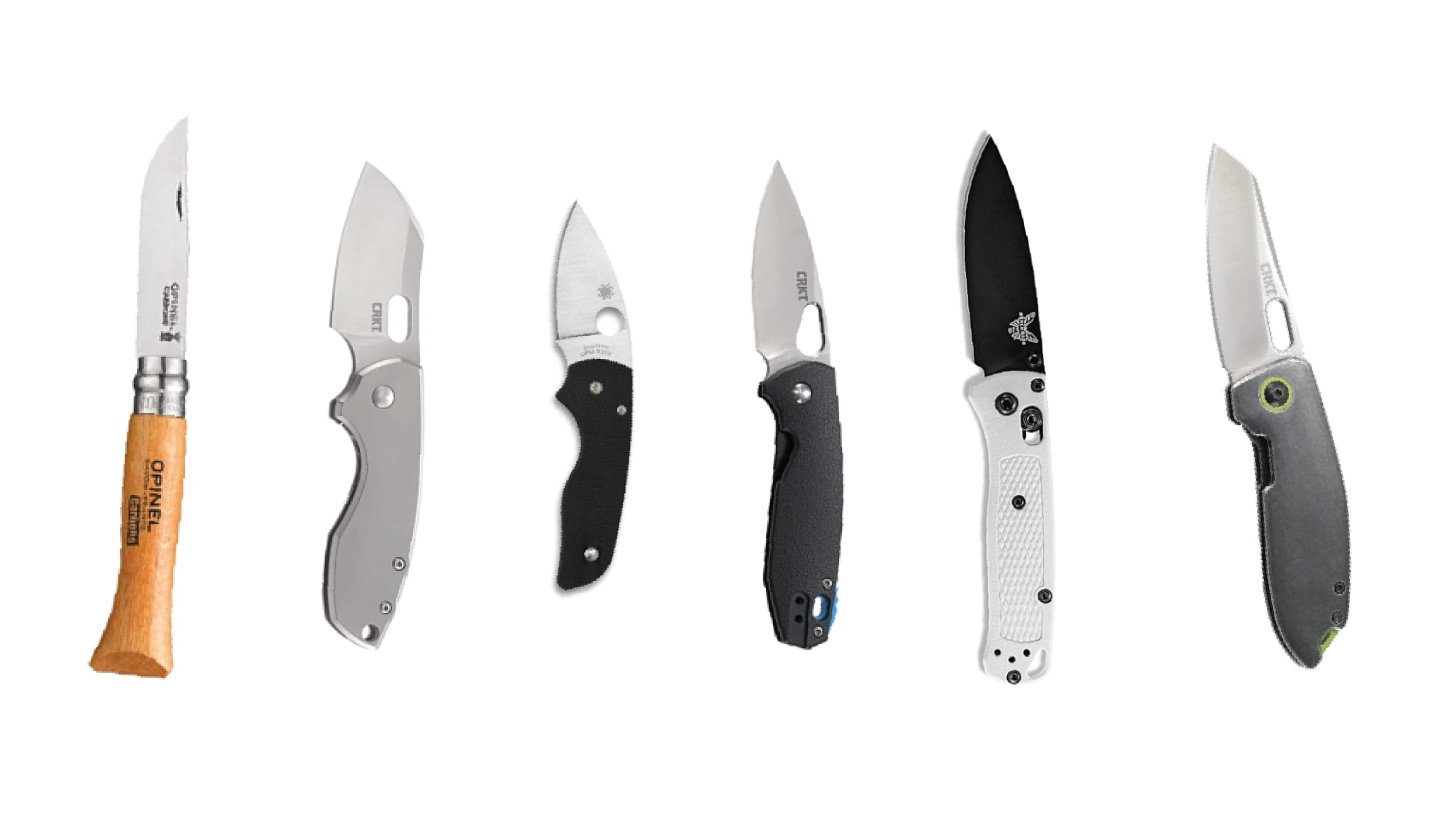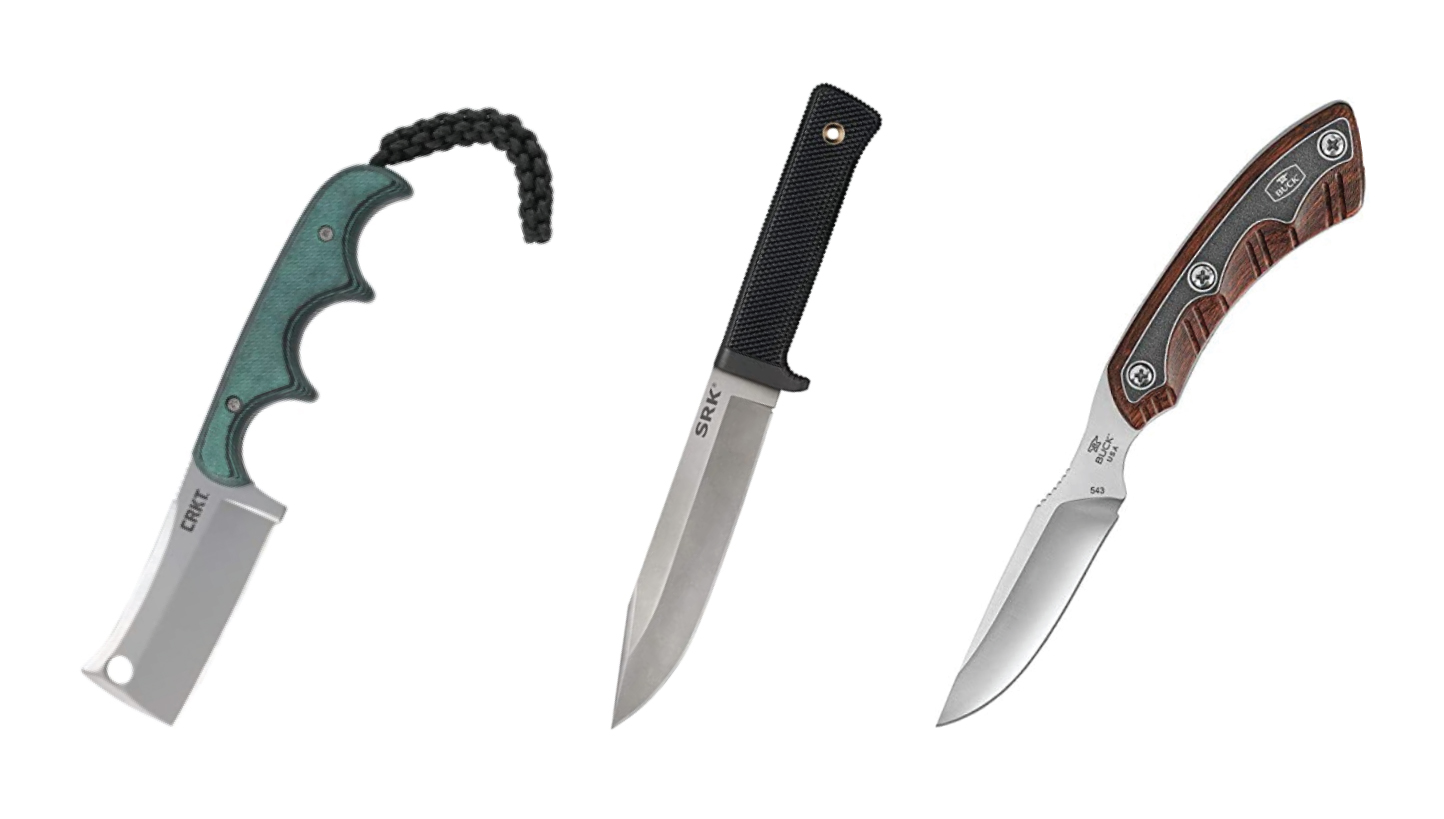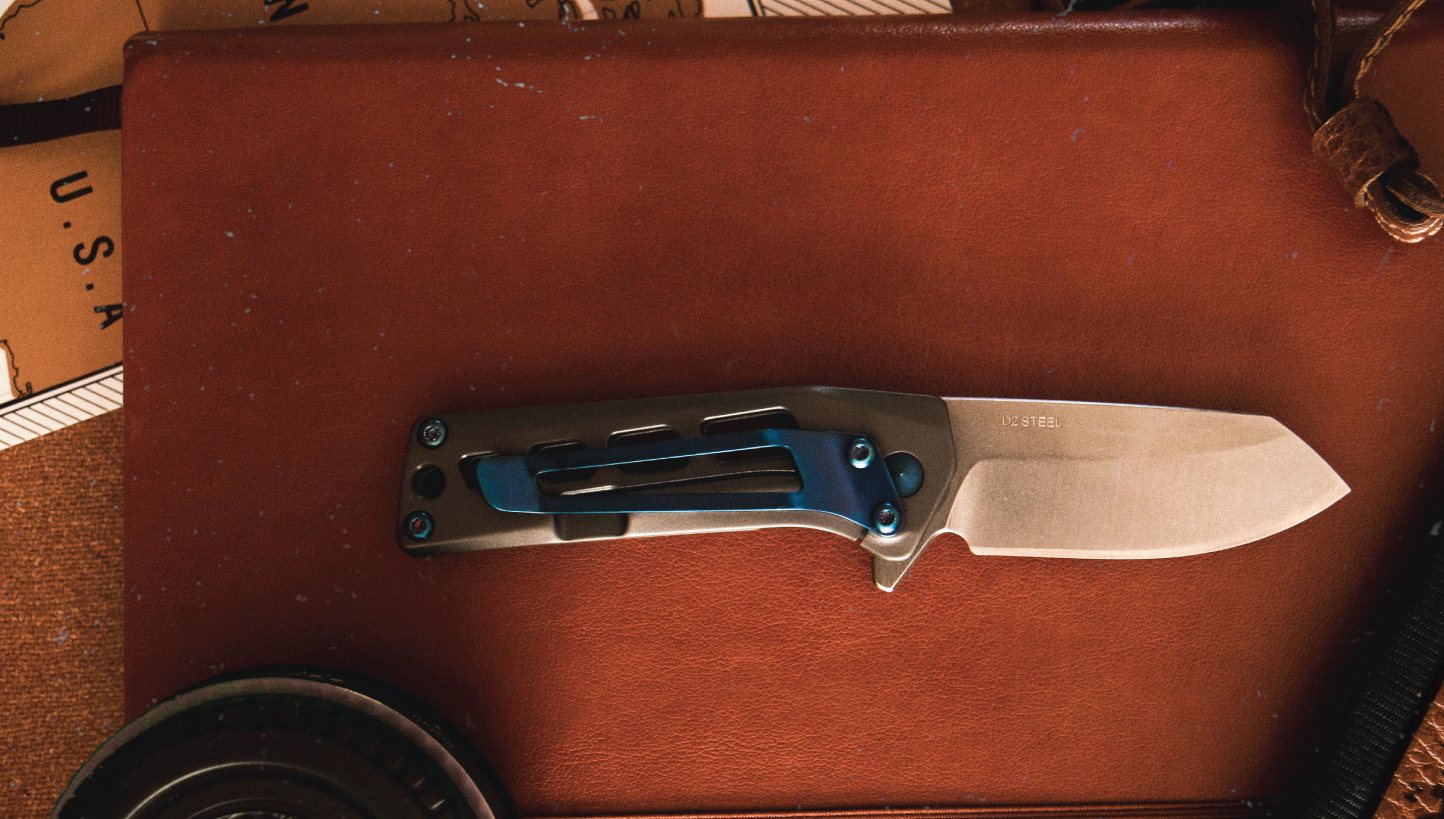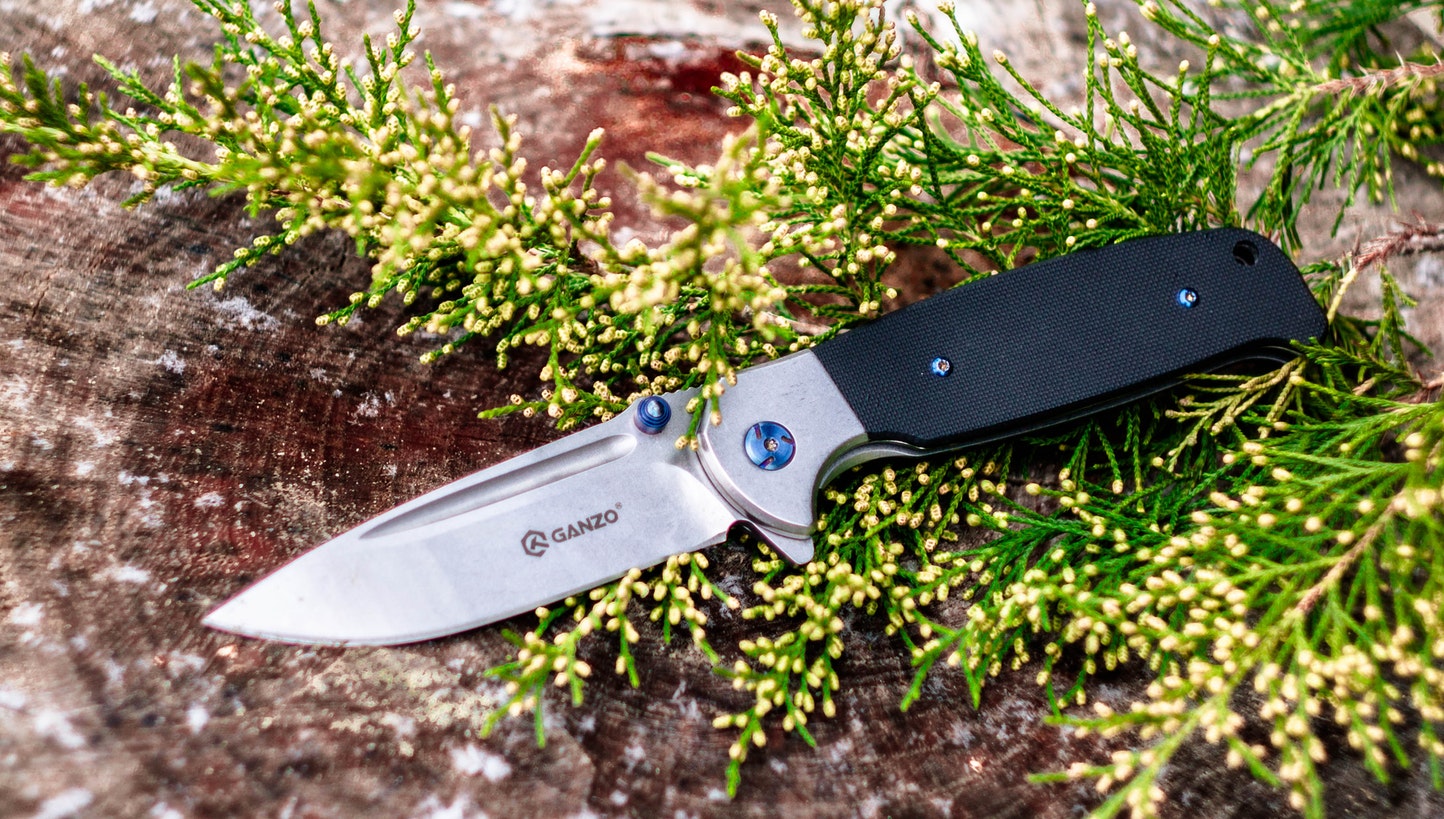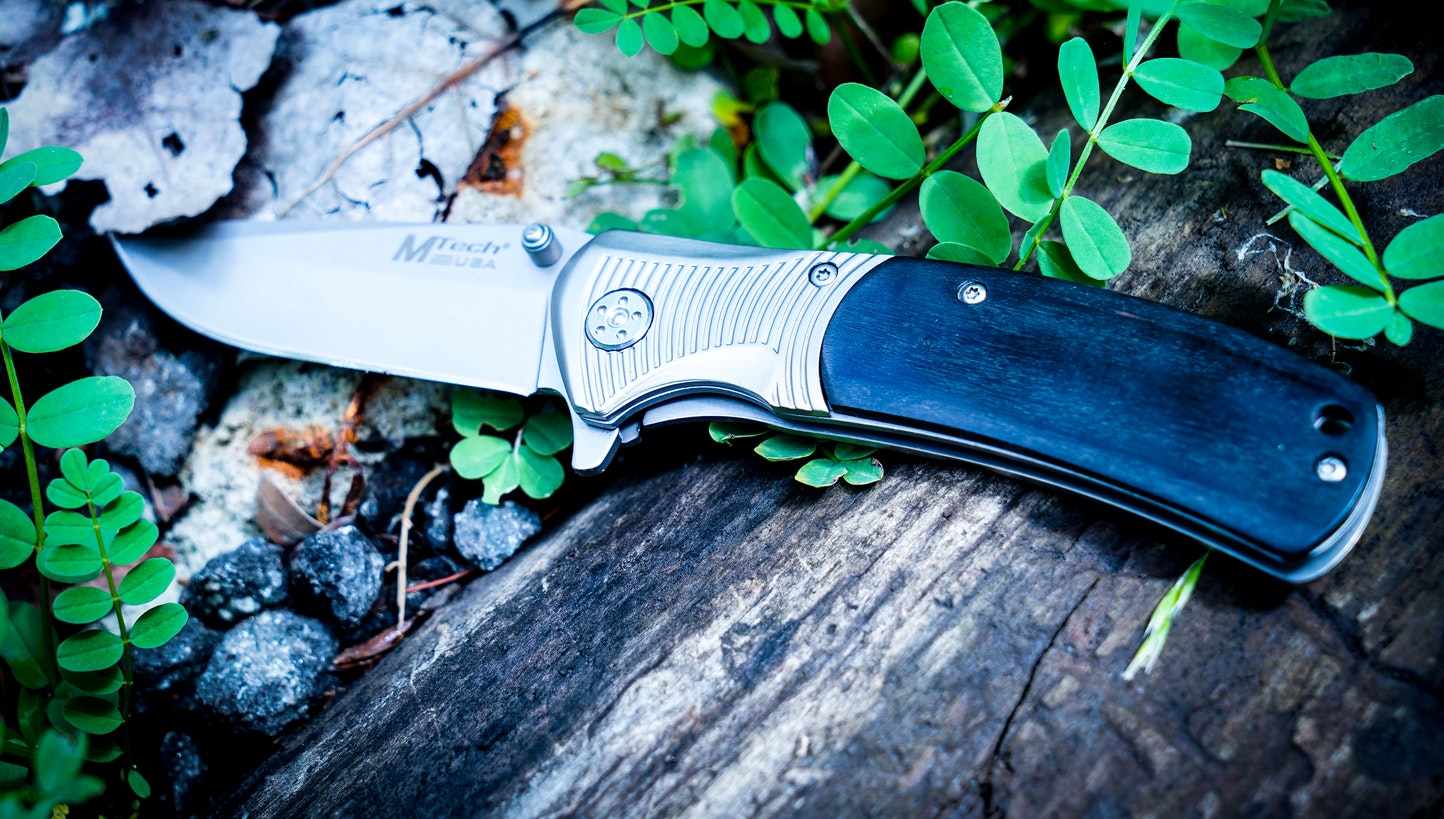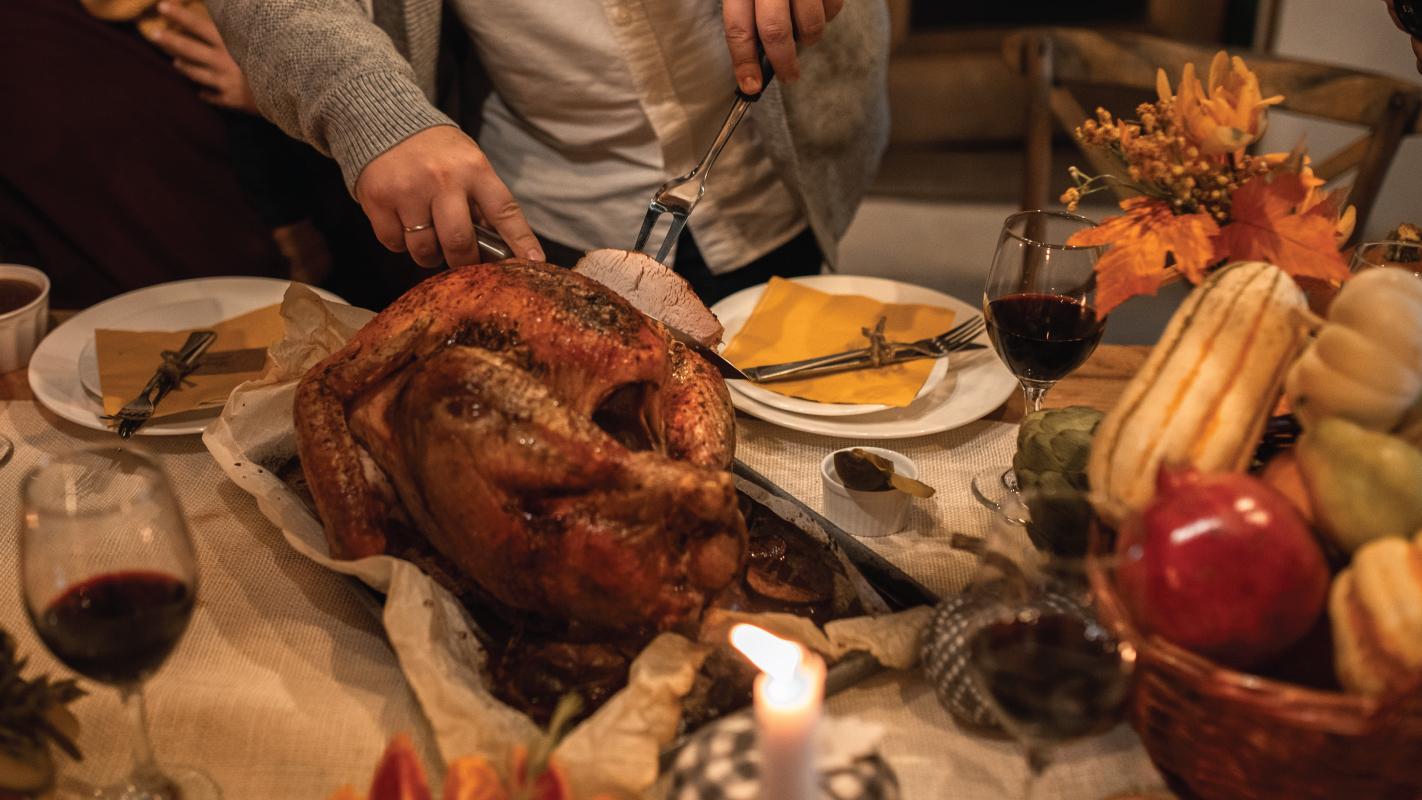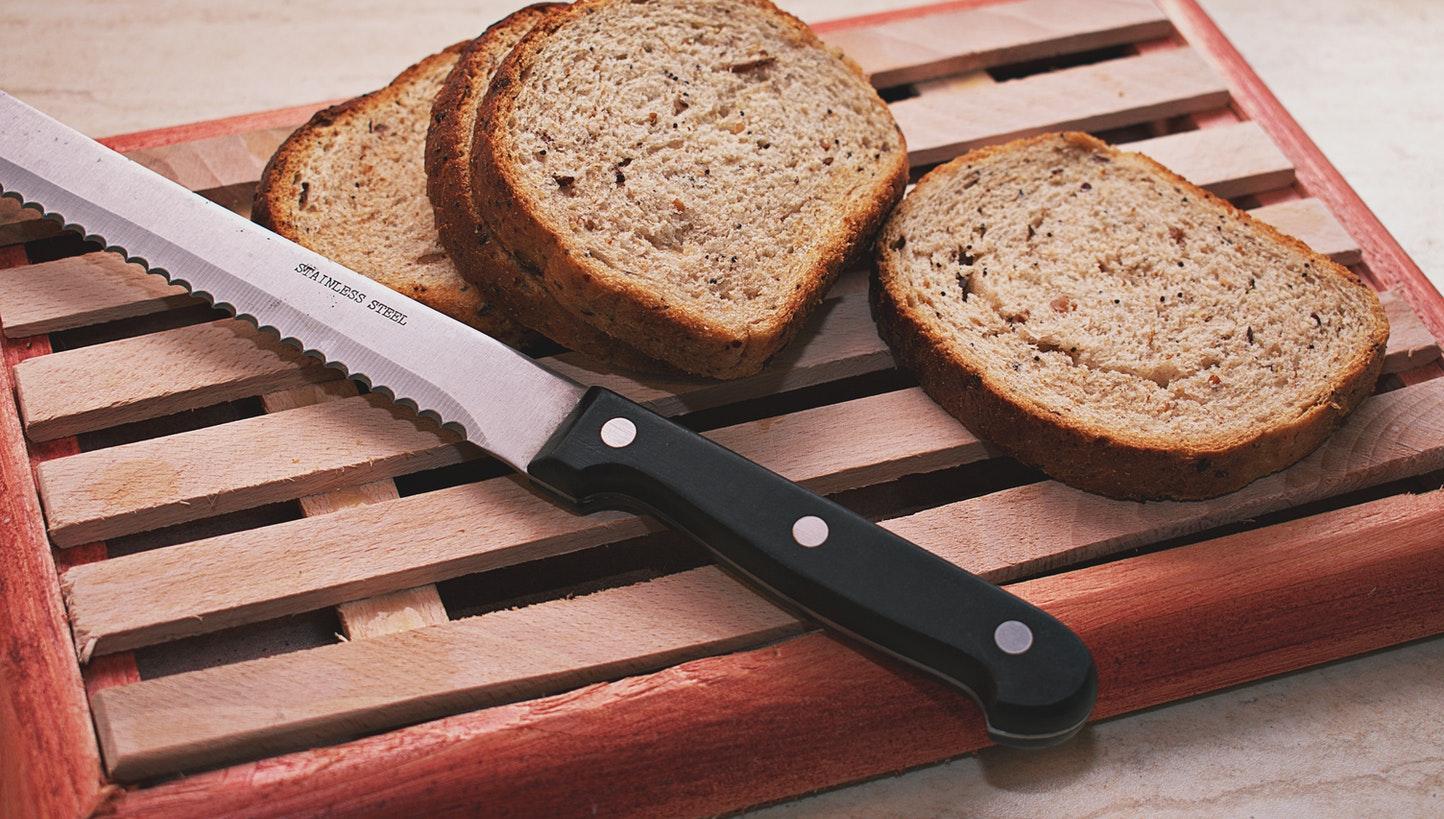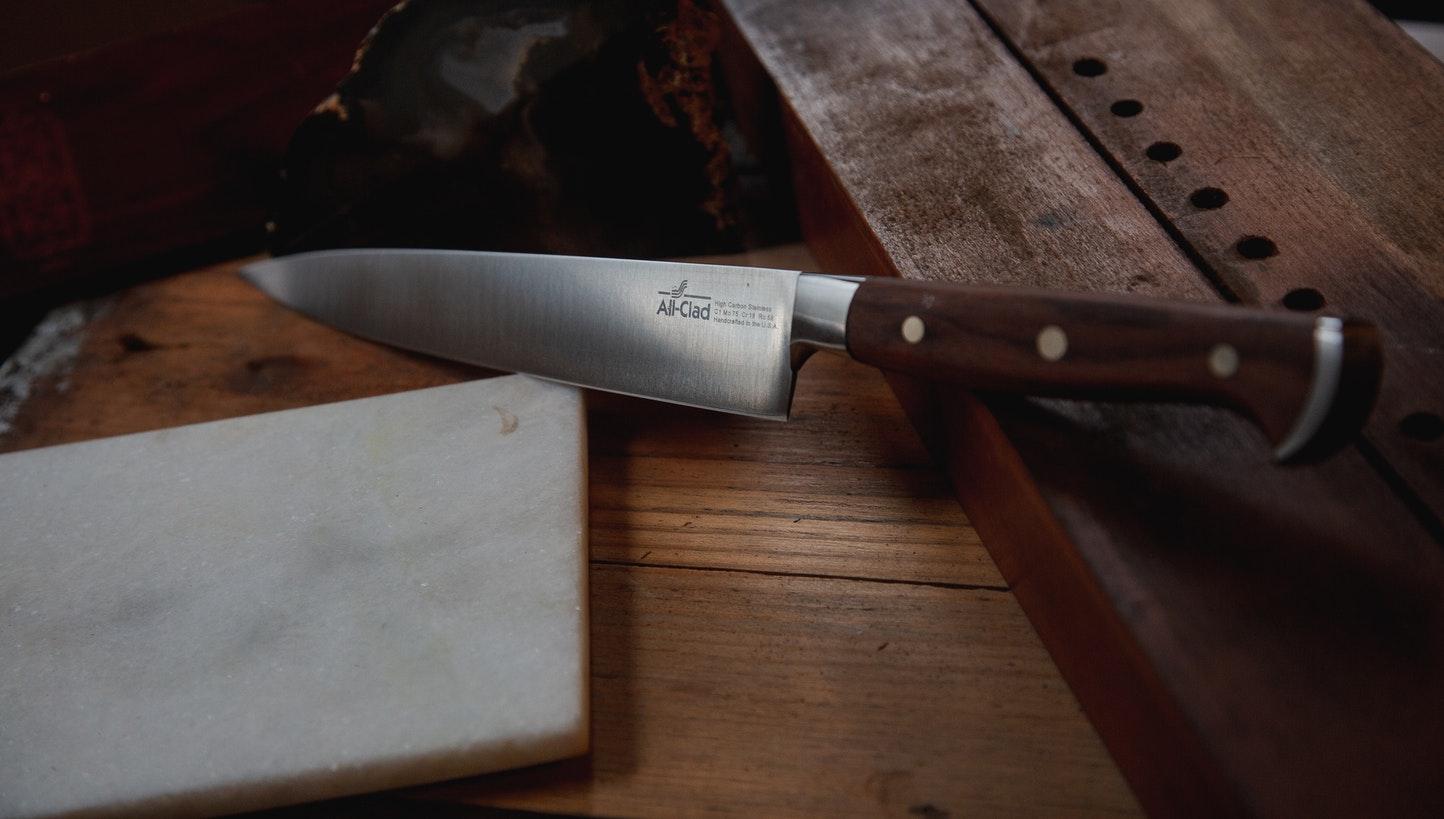Interviews
The Kitchen Axe: A Unique and Versatile Danish Kitchen Tool
31.01.2018
Here’s a very special interview with Rune Malte Bertram-Nielsen, a skilled Danish blacksmith that makes what it is, in my opinion, a very interesting and unusual kitchen tool – the Kitchen Axe:
https://www.youtube.com/watch?v=QPa7K3rlFTE

1. Hello Rune. Tell us a bit about yourself: How did you start forging axes? Where are you located?
I am a 24 years old blacksmith located in Denmark, zip code 5800 (born 1993 in Denmark). I am the owner and only employer in a small company called “Bertram Formidling og Haandvaerk”. I started the company in 2016 and at that time I was making my living by teaching green woodwork and bushcraft and selling hand carved spoons, kuksa and other kitchenware. One year later in 2017 I built my blacksmith workshop and started selling hand forged tools instead of teaching. I live a simple self-reliance lifestyle and keep the business small, just enough to being able to pay for the most basic consuming.

I spend the rest of my time growing food, learning more crafts, living in the wilderness of Sami for long periods, visiting other craftsmen etc. I make traditional tools from all over the world like the Sami Leuku, farming hoe designs from Africa, different Scandinavian axe designs etc. I love to take almost forgotten tools and try to make customers and the public “rediscover” like the stock knife and the hook tools for pole lathe turning. Axes is one of the things i really like to forge, it is a lot of fun. I use axes all the time in my daily life and love to be able to continue the tradition of making something so powerful and useful.
2. I think the idea of a kitchen axe is brilliant. What was the inspiration? How did you think of it?
[ngg_images source=”galleries” container_ids=”4″ display_type=”photocrati-nextgen_basic_thumbnails” override_thumbnail_settings=”0″ thumbnail_width=”240″ thumbnail_height=”160″ thumbnail_crop=”1″ images_per_page=”20″ number_of_columns=”0″ ajax_pagination=”0″ show_all_in_lightbox=”0″ use_imagebrowser_effect=”0″ show_slideshow_link=”0″ slideshow_link_text=”[Show slideshow]” order_by=”sortorder” order_direction=”ASC” returns=”included” maximum_entity_count=”500″]
A friend was the main inspiration. He is a cook and I wanted to make him a kitchen tool – something special that will give him positive attention then cooking for the public and still be a functional tool. He likes vikings and the axes I make, so I just combined that into a tool, which do some of the same tasks as a regular kitchen knife. An axe design specially for cutting vegetables is not a common thing here. I don’t think i ever have seen one before. But some kitchen knives has similarities with axes in shape and function… So why not? I do always have axes close to the wood stove and kitchen. The same goes for when I stayed a few months in a Romanian village, and when I visit simple villages in Sami, or just out in the nature: we just use a regular axe as a kitchen tool if we don’t have a knife close by, no big deal. I am defiantly not the first to get the idea of using axes in the kitchen, probably not the first one to design an axe mainly for vegetables neither, but probably the first to go viral on social media with a kitchen axe.
3. Is there a strong axe usage and making culture in Denmark? Where does it come from in History?
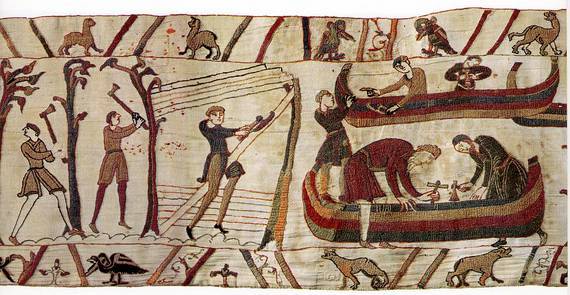
We have been using axes in Denmark ever since the vikings age just like the countries around us. It is a very important tool in our history. Unlike some of our neighboring countries, we don’t have axe mass production factories in Denmark anymore, but in almost every home there are still axes from the largest brands like DSI (Danish Steel Industry) and a lot of import from Sweden and Finland.
![]()
We still have very talented blacksmith in Denmark making axes for a living or just doing it as a hobby – we even have some very strong Viking-enthusiasm communities, where blacksmiths make iron and forge the old way. With industrialization and more modern times, some craftsmen stopped forging, and also the use of some of the hundreds types of specialized axes we have went lost… but in some communities the interest in the many types of axes is quickly coming back.
4. What material is the axe blade made of? And the wooden handle?
The axe head is a single piece of leaf spring steel from a care. I get leaf springs for free from the local car mechanic. No forge welding, just upsetting the piece and forging by hammer into shape, chisel and drift the eye. To save time, you can cut a larger piece and do some stock removal by using for example an angel grinder. Spring steel is great for the job, but you can use all kinds of tool steel.
[ngg_images source=”galleries” container_ids=”1″ display_type=”photocrati-nextgen_basic_thumbnails” override_thumbnail_settings=”0″ thumbnail_width=”240″ thumbnail_height=”160″ thumbnail_crop=”1″ images_per_page=”20″ number_of_columns=”0″ ajax_pagination=”0″ show_all_in_lightbox=”0″ use_imagebrowser_effect=”0″ show_slideshow_link=”0″ slideshow_link_text=”[Show slideshow]” order_by=”sortorder” order_direction=”ASC” returns=”included” maximum_entity_count=”500″]
Another option is to use soft steel and forge weld tool steel on the edge – if you master the skill, is it the fastest and best option. It’s also the traditional way of doing it.
The handle is dry ash, painted with red-brown leather color.
5. What are the dimensions of the kitchen axe?
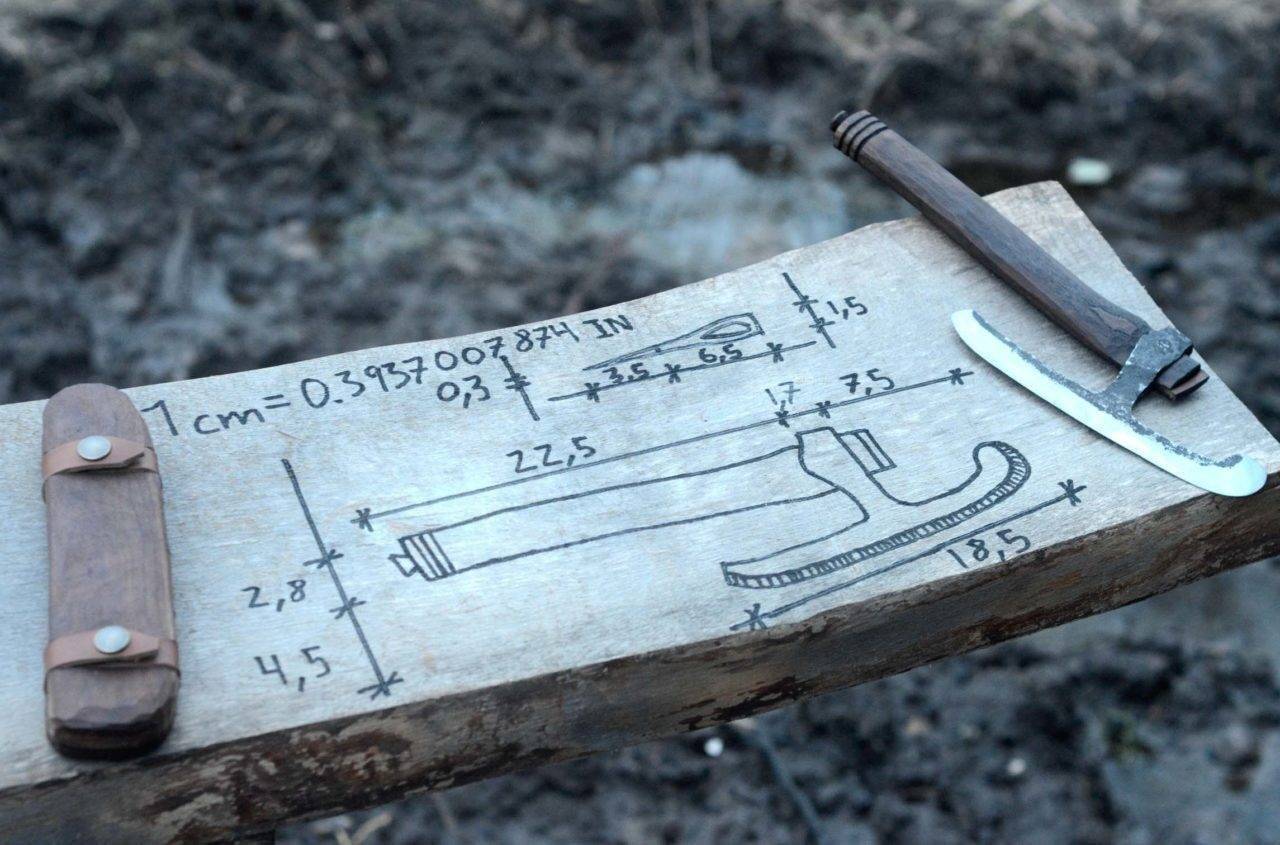
The axe weighs 190 grams (0.42 lb) including the handle and the cover weighs 170 grams (0.38 lb). It is a copy of a danish broad axe from the viking age, a broad axe for making lumber, just much smaller in scale. It has chisel grind made just like a regular broad axe for right handed people. It would make a better kitchen axe if the grind was a regular grind (just like a normal kitchen knife), but in my case I followed the idea of making a “true” copy of the danish broad axe.
Some of the keys of the design are, in my opinion:
- low weight
- long edge
- thin cutting blade
- flat edge area
- bend at the tip
The wedge goes a bit above the handle, enough to easy tighten the axe head or take it apart for cleaning – maybe important in some professional kitchens.
6. How long does it take to make one kitchen axe?
[ngg_images source=”galleries” container_ids=”2″ sortorder=”17,11,14,9,12,13,19,16,8,10,15,18,7″ display_type=”photocrati-nextgen_basic_thumbnails” override_thumbnail_settings=”0″ thumbnail_width=”240″ thumbnail_height=”160″ thumbnail_crop=”1″ images_per_page=”20″ number_of_columns=”0″ ajax_pagination=”0″ show_all_in_lightbox=”0″ use_imagebrowser_effect=”0″ show_slideshow_link=”0″ slideshow_link_text=”[Show slideshow]” order_by=”sortorder” order_direction=”ASC” returns=”included” maximum_entity_count=”500″]
The first one took three days, about 30 hours by hand. Now, when I have made a few, takes it about 15 hours to make one. I do it all by simple hand tool, you can do it a lot faster with machinery.
7. It looks very usable to me. Do you think it can become a kitchen tool used by many? Does it have some benefits over a knife, in your opinion?

If designed proper is it a very handy tool, in some cases a better chopper than the typical kitchen knife. But most importantly the kitchen axe does a lot of tasks just as well as a regular kitchen knife.
For the most part do I think the user is going to be modern people who like it mostly because how it looks and professional cooks who work in public because it can give some attention and give the customers a special experience.
I do not believe it is going to be a revolutionary new kitchen tool – just a fun one for a special occasion and for a few people as a daily kitchen tool.
8. Do you sell the Kitchen Axe? What’s the price? How can people get in touch with you to buy?
I am only going to sell a few here in Denmark, probably about 50 this year. I do not ship abroad (except Norway and Sweden). I am going to make a few different designs from 1000-3000 danish kroner (about $166-500 or about €134-403). My recommendation is to make one yourself, maybe while doing a blacksmith basic class, or to make a custom order at a local tool blacksmith. I am glad so many people like the idea and the design – fantastic if it can inspire to start blacksmithing or help a fellow blacksmith get some orders, or get some people have more fun in the kitchen.
You can follow and Contact Rune on Facebook
[ngg_images source=”galleries” container_ids=”3″ display_type=”photocrati-nextgen_basic_thumbnails” override_thumbnail_settings=”0″ thumbnail_width=”240″ thumbnail_height=”160″ thumbnail_crop=”1″ images_per_page=”20″ number_of_columns=”0″ ajax_pagination=”0″ show_all_in_lightbox=”0″ use_imagebrowser_effect=”0″ show_slideshow_link=”0″ slideshow_link_text=”[Show slideshow]” order_by=”sortorder” order_direction=”ASC” returns=”included” maximum_entity_count=”500″]
